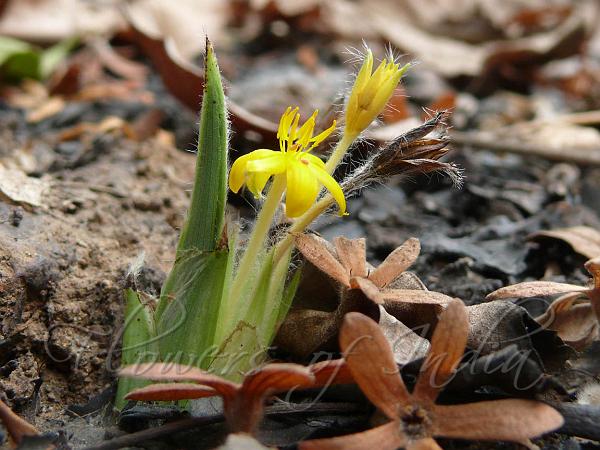|
| Golden Eye Grass |
|

|

| File size | 189698 |
| Original date | 5/16/09 3:56 PM |
| Resolution | 1152 x 864 |
| Flash | Flash did not fire, auto |
| Focal length | 7.4mm |
| Exposure time | 1/125s |
| Aperture | 3.2 |
| Focus Distance | |
| Metering Mode | Multi-segment |
| Camera make | Panasonic |
| Camera model | DMC-FZ50 |
| Sensor type | OneChipColorArea |
|
|
|
Photo: |
Botanical name: Curculigo orchioides Family: Hypoxidaceae (Star Grass family)
Synonyms: Curculigo ensifolia, Curculigo brevifolia, Hypoxis orchioides
Synonyms: Curculigo ensifolia, Curculigo brevifolia, Hypoxis orchioides
Golden Eye Grass is a herbaceous tuberous perennial with
a short or elongate root stock bearing several fleshy lateral roots. The plant
can grow up to 10-35 cm tall.
Leaves sessile or petiolate 15-45x1.3-2.5 cm, linear or linear lanceolate,
tips sometimes rooting, scape very short, clavate.
It has hardy leaves and can take shade: the leaves will
just get a bit longer in the shade than in full sun shine. During flowering
period it open a golden yellow flower at the leaf base every day. This can
form a cute miniature plant pot in your room. Flowering: July-August.
Medicinal uses: The rhizomes of the plants are used for the
treatment of decline in strength, jaundice and asthma. According to Ayurveda,
root is heating, aphrodisiac, alternative, appetizer, fattening and useful in
treatment of piles, biliousness, fatigue, blood related disorders etc.
According to Unani system of medicine, root is carminative, tonic,
aphrodisiac, antipyretic and useful in bronchitis, ophthalmia, indigestion,
vomiting, diarrhea, lumbago, gonorrhea, gleet, hydrophobia, joint pains etc.
The rhizomes of the plants are used for the
treatment of decline in strength, jaundice and asthma. According to Ayurveda,
root is heating, aphrodisiac, alternative, appetizer, fattening and useful in
treatment of piles, biliousness, fatigue, blood related disorders etc.
According to Unani system of medicine, root is carminative, tonic,
aphrodisiac, antipyretic and useful in bronchitis, ophthalmia, indigestion,
vomiting, diarrhea, lumbago, gonorrhea, gleet, hydrophobia, joint pains etc.
Medicinal uses:
 The rhizomes of the plants are used for the
treatment of decline in strength, jaundice and asthma. According to Ayurveda,
root is heating, aphrodisiac, alternative, appetizer, fattening and useful in
treatment of piles, biliousness, fatigue, blood related disorders etc.
According to Unani system of medicine, root is carminative, tonic,
aphrodisiac, antipyretic and useful in bronchitis, ophthalmia, indigestion,
vomiting, diarrhea, lumbago, gonorrhea, gleet, hydrophobia, joint pains etc.
The rhizomes of the plants are used for the
treatment of decline in strength, jaundice and asthma. According to Ayurveda,
root is heating, aphrodisiac, alternative, appetizer, fattening and useful in
treatment of piles, biliousness, fatigue, blood related disorders etc.
According to Unani system of medicine, root is carminative, tonic,
aphrodisiac, antipyretic and useful in bronchitis, ophthalmia, indigestion,
vomiting, diarrhea, lumbago, gonorrhea, gleet, hydrophobia, joint pains etc.
| Identification credit: Rahul Prabhu Khanolkar | Photographed in Mumbai & Belgaun, Karnataka. |
• Is this flower misidentified? If yes,